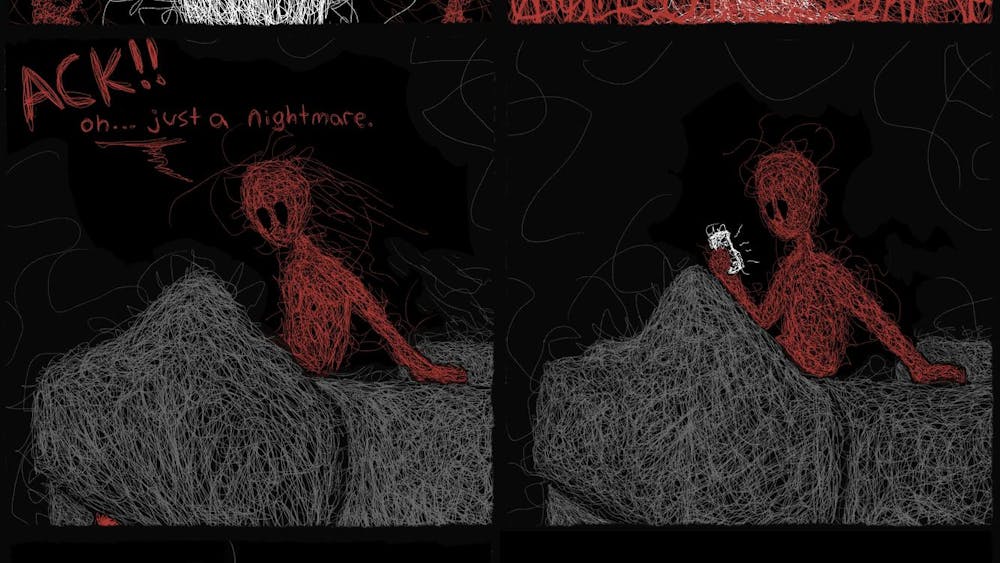Four decades ago members of a radical student movement formed a newspaper that resulted in expulsions of students and the firings of professors at Eastern Michigan University.
The Second Coming wasn’t your average student newspaper. Although it had the usual news, cartoons and opinions sections, it also covered university news, but with unfriendly-like headlines, such as, “EMU: A Slumlord.”
“That was the year that they were supposed to open the tower dormitories, but they were several months behind schedule,” said Frank Michels, one of the founding members of the paper. “So what they did was over loaded all the other dormitories. Dorms that were for four people, all of sudden they were for five people. And of course no one got discounts.”
The Second Coming was only around for roughly five years before being banned on campus, but during its reign, it caused a lot of havoc at the university. Now 40 years later, Michels and his peers are remembering how a 24-page newspaper changed their time at EMU dramatically.
Michels, now a writer for Gaylord Herald Times, was a philosophy student in the summer of 1969. He wanted to create a newspaper that was unaffiliated with the university after another student tabloid was shut down due to the university demanding review before publishing. He rounded up some of his friends and made his first move.
“I said, ‘Let’s put out a newspaper, but lets not submit to arbitrary authority or censorship,’ ” Michels said. “I met with the dean of students way in advance of putting out the paper and informed them of what we were doing and at some point we received a letter saying you can’t distribute your paper.
“We have a rule that prohibits distributions of commercial products except as provided by law on the campus,” Michels said of the letter.
Even with a warning, Michels got the paper published. He believed since he had gotten the written permission of the vice president of business and finance he wasn’t breaking any law, so in October 1969, The Second Coming was born.
The launch of the newspaper went fine, it wasn’t until the second issue that it sparked a great deal of controversy.
“Our second edition had a satire about the homecoming queen contest which back then was a bathing suit contest,” Michels said.
“So we had a game that satirized it that in particular was controversial but the university didn’t want us to be circulating it because no one was in charge of us. We were a non-profit corporation with no money from the university.”
Their game, among other things, had pictures of the homecoming queen contestants as mug shots with letters on their foreheads
“It was an outrageous satire and of course the university president took that as a chance to attempt to squash the paper,” Michels said.
He said there was an editorial page expressing that the game was not serious and it was meant to point out the blatant woman domination or exploitation at that time.
“Women in 1969 had to be in their dorm by 11 p.m,” Michels said. “We basically said it’s not serious, but it’s an extreme case and we definitely weren’t trying to offend anybody.”
Although The Second Coming didn’t want to offend anybody, it did. One of the real contestants for homecoming queen threatened to slap the paper with a lawsuit and the university president, Harold Sponberg, who was already not a fan of the paper, decided to make threats as well.
“The president issued a ban on the paper because the content was unacceptable to the university community,” Michels said. “And we said ‘That’s your opinion and we’re a newspaper and you don’t have the authority to do that. If you object and say that we libeled somebody and misrepresented the truth, then take us to court,’ and no one ever did.”
Faculty who were in favor of the paper and used to sell it outside of McKenny Union were also getting heat from administration. The president told faculty members who were involved with the paper to stop or their name would be taken down and they would be charged with violating university policy.
David Cahill, then a political science professor, was one of the supporters of the paper. He even let the students publish it out of his apartment.
“[I’m] one of the purge professors, as we called ourselves,” Cahill said.
Cahill and other professors who were affiliated with the paper were fired by the administration even after opposition from department officials.
“The administration did not like this in a major way so they non-rehired me so I was only at Eastern for one year,” Cahill said. “It was purely political and a bunch of us ‘purge professors’ went to federal court over it and we won a substantial settlement from Eastern.”
Cahill used his share of the money to attend law school and moved to Ann Arbor, where he resides today, still practicing law.
“Eastern was a very repressive university in those days, ran like a plantation,” Cahill said. “Sponberg had a military background and he couldn’t deal with people who didn’t agree with running the university in a dictatorial way. So he tried to get rid of students and faculty and paid professors off in a lawsuit and he was never the same after that. I believed we broke his spirit and he left Eastern after.”
As for Michels, he was also banned from the university along with the newspaper.
“The president said that I was creating disturbances and disruptions and at that point I was never convicted of anything,” Michels stated. ”I went through the entire judicial system and was exonerated at every point of student court. I was charged with violating newspaper policy by selling a newspaper.”
Michels later returned to EMU to complete his degree after reapplying in 1974. After several failed attempts to apply the way he originally did, through admissions, he had to talk to Sponberg directly and agree he would not disrupt the EMU community.
Michels, who now resides Up North, said there wasn’t anything planned for the 40th anniversary, but he said he wouldn’t mind getting together with his old crew to catch up on lost time.










